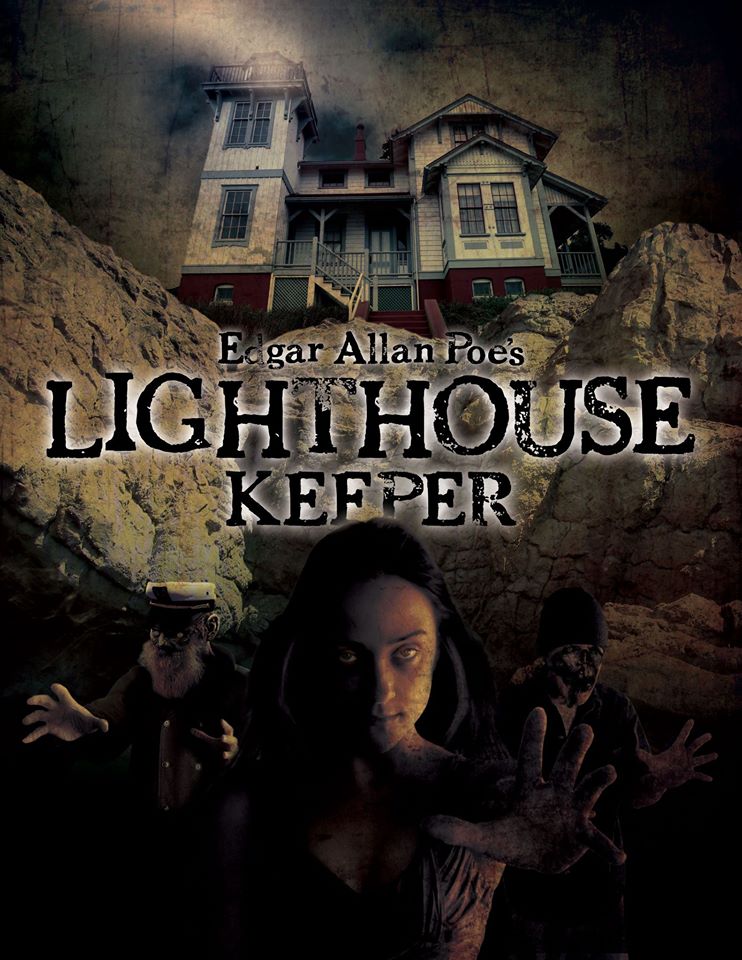

They included Cristina Fernández Cubas, whose version is included in her anthology Todos los cuentos (Tusquets editores, 2008).Ī 2016 film, Edgar Allan Poe‘s Lighthouse Keeper, was loosely based on the story. In 1997, Ediciones Áltera commissioned a number of Spanish and Latin American writers to complete the story, each in their own manner.
The lighthouse keeper serial#
In addition to Bloch's adaptation of "The Light-House", in the TV series The Following, fictional psychopath and serial killer Joe Carroll (played by James Purefoy) writes a novel inspired by Poe's tale, titling it The Gothic Sea. An earlier version appeared in the January/February 1953 Ziff-Davis publication Fantastic entitled "The Lighthouse". The story also served as inspiration for Max Eggers to develop the idea of what, following his brother, Robert Eggers' involvement, became The Lighthouse (2019).įantastic published Robert Bloch's story based on the Poe fragment as "A New Edgar Allan Poe Masterpiece".Īuthor Robert Bloch finished Poe's tale and published it in the February 1969 issue (#53) of Famous Monsters of Filmland as "Horror in the Lighthouse". Lane's Finding Poe (2012) speculates the role Poe's own works, including "The Lighthouse", may have played in his mysterious death. Joyce Carol Oates also used Poe's "The Light-House" as an inspiration for the story 'Poe Posthumous, or The Light-House' in her collection Wild Nights! (2008). Richard Selzer included his short story 'Poe's Light-house', inspired by Edgar Allan Poe's 'The Light-House', in 'The Doctor Stories', published by Picador. Given the obscurity of Poe's story, it is very unlikely that Kafka had read it.Īuthor and surgeon Dr. Both involve a reclusive narrator who obsesses over the safety of his enclosure, though Kafka's work was much closer to completion and, consequentially, much more elaborate. It is very similar in theme to the later and also unfinished short story " The Burrow" by Franz Kafka. The lighthouse keeper, then, stands in for Poe himself, who is expressing his own feelings of being alone and isolated and questioning if he can survive. Like many of Poe's works, "The Light-House" has been studied autobiographically.

Its style is very straightforward and plainspoken, in contrast to the more elaborate and decorated prose of Poe's earlier stories, implying a shift in Poe's writing style which the author did not live to realize. Themes of foreboding, isolation and paranoia are apparent in "The Light-House". ( December 2007) ( Learn how and when to remove this template message) Statements consisting only of original research should be removed. Please improve it by verifying the claims made and adding inline citations. This article possibly contains original research. It is likely the last fiction work Poe wrote. Silverman speculates that the work might have been complete in its two-page form and the final blank entry implied the narrator's death. It is uncertain how the story would have ended and there is some debate if "The Light-House" was intended as a short story or a novel. The last line reads, "The basis on which the structure rests seems to me to be chalk."Ī heading for January 4 follows, but there is no text.īiographer Kenneth Silverman believes Poe began writing "The Light-House" between May and August 1849. He again begins to worry about the safety of the structure, but tries to reassure himself. On January 3 he describes the day as being calm and placid, and resolves to explore the lighthouse. On January 2 he describes the sea as being calm and uneventful, the wind having "lulled about day-break", and expounds on his passion for being alone. He briefly comments that he hears some echo in the walls, thinking they may not be sturdy, but catches himself and claims that his worries are "all nonsense", alluding to a prophecy made by his friend DeGrat, who got him the appointment to the lighthouse. He also dwells on the concept of being alone, and how much he looks forward to spending time alone, just him and his dog Neptune, so he can write his book. He records that a storm is in progress, and that the ship that brought him "had a narrow escape". On January 1, the narrator records that it is his first day in the lighthouse, and records his annoyance at the fact that he had a difficult time getting the appointment to man it, even though he is of noble birth. The setting is an island off the coast of Norway. The story is told as a series of diary entries, the first being New Year's Day, 1796. He did not live to finish it, and had barely begun it by the time of his death in 1849.

" The Light-House" is the unofficial title of the last work written by Edgar Allan Poe.


 0 kommentar(er)
0 kommentar(er)
